
Since the beginning of 2018, Afghanistan has been shaken by multiple political crises, from provincial officials refusing to step down, Taliban attempts to endanger major provincial cities and expand from rural areas in the never ending war, and a crisis of legitimacy coming from former warlords like Gulbuddin Hekmatyar and Vice President General Abdul Rashid Dostum, who has now returned to Afghanistan after spending 14 months in self-imposed exile in Turkey. However, it is still the most dangerous terrorist group in the region that frequently occupies headlines and demands the attention of major political players in the region – the Islamic State Khorasan Province.
Islamic State first appeared in Afghanistan in 2014, when the first militant network pledged bayat, or allegiance to the group originally from Iraq. The appearance of these groups was a direct consequence of the proclamation of the so-called Caliphate on June 29, 2014, first by its spokesperson Mohammad al-Adnani in his “This Is The Promise of Allah” speech, released by al-Hayat Media Center, and confirmed a few days later on July 5, with ISIS leader Abu Bakr al-Baghdadi giving his first sermon as the supposed “Caliph” in the Iraqi city of Mosul.
The Afghan/Pakistani border has been a safe haven for multiple groups that have fought successive Afghan governments since before the Soviet invasion in 1979. These groups have always had different ideologies, varying from nationalist, through Islamist to hardcore deobandi and salafi-jihadist. The majority of Islamists, especially those of Pakistani origin, have never identified closely with the official ideology of the Taliban, which remains very pragmatic towards the societies of Afghanistan and Pakistan, and makes concessions and alliances with the Pakistani military in order to gain control over tribal confederations.
Diversity and a wide range of militias with loose allegiances to each other provided an excellent recruiting pool that enabled ISIS to quickly gather enough force to actively pose a threat in Afghanistan. Commanders and local emirs, dissatisfied with supposed cynicism, lack of purity in establishing sharia law and the collaboration of their superiors with the Pakistani army and Pakistan’s Inter-Services Intelligence agency, were vulnerable to exploitation by ISIS’s creed and promises.

Before ISIS proclaimed Khorasan Province to be its Afghan/Pakistani wing, extending its claims to the historic Khorasan (Central Asia) region, an important part of the Pakistani Taliban (Tehrik-i-Taliban Pakistan) had pledged an oath of allegiance to ISIS, significantly increasing already existing recruitment of new ISIS networks, mainly among already existing salafi groups like Lashkar-e-Jangvi, Jundullah and various TTIP subordinates.
Their leader – and, after Adnani’s acceptance of bayyah on January 26, 2015, the wali of Wilayat Khorasan – was Hafez Saeed Khaan, who could immediately operate a large militant network within the structures created at the end of 2014 and the beginning of 2015.
ISIS gains ground in Afghanistan
The very first reactions of the U.S. and Pakistani militaries were to remove the threat posed by the unification of salafists into the Central Asian wing of the Islamic State. Despite these two countries’ attempts, ISKP was able to gain footholds in parts of Afghanistan, including in the Taliban’s southern stronghold Helmand, provinces in the north like Jowzjan, and Sar-e-Pul and Farah in the west.
The Taliban’s response to the new threat was relatively swift with the launch of major operations in the summer and fall of 2015, causing ISKP to relocate much of its manpower to safer and easier to defend mountainous provinces bordering Pakistan, mainly Kunar, Paktia and Nangarhar.
ISKP’s military threat to the Taliban was bolstered by further pledges of allegiances, including the majority of the powerful Islamic Movement of Uzbekistan, which prevented the collapse of ISIS structures existing in the north of Afghanistan.
Unable to completely prevent ISKP’s movement, the Taliban decided to use social media networks such as Facebook and Telegram to spread anti-ISKP messages and counter the group’s influence. Such attempts included direct conversations on Facebook forums and sharing so-called “analysis of Daesh movement in Afghanistan,” essentially a giant quasi-scholarly document that describes the Islamic State’s ideology and traces its violent roots to Iraq.
The Taliban’s media wing Al-Emara has released a few videos directly targeting ISKP, such as one in 2017 that depicts an alleged defector. In the video, ISKP deputy Abdul Razzaq is forced to confess to the audience his reasons for changing sides, explaining the “criminal ideology of Daesh” and portraying the chaos in which ISKP allegedly remains.
ISKP on the other hand has been heavily involved in applying their understanding of Islam from the beginning of the Afghan branch’s existence, carefully teaching and radicalizing youth as a part of their global “Cubs of Khilafah” strategy.

Islamic State operations inside urban areas of Afghanistan and Pakistan have coincided with its slowly shrinking territory in Iraq and Syria. The number of ISKP attacks rose steadily in 2016 to a peak at the end of 2017, with Kabul getting hit seven times in just three months, suggesting that their networks inside the major cities have been on the rise.
This trend has continued in 2018, with multiple ISKP attacks targeting the Afghan and Pakistani militaries, democratic institutions and gatherings, and various minority religious sects such as Hazaras, Sufis and more recently Hindus and Sikhs in Jalalabad.
One of the most interesting aspects of the ISIS recruitment effort is the role of Kurdish jihadists. One of militants involved in a deadly April 29 attack in Kabul was identified by ISKP as Qaqa al-Kurdi, a 29-year-old man of Kurdish origin. Most jihadists ISKP transfers to the Afghan capital are called “Khorasani” or by names more closely identifying their ethnic background (Tajiki, Uzbeki) or Pakistani tribal agencies in majority Pashtun regions (Bajouri). The Kurdish role in Islamic State Central has always been significant, with multiple video recordings of Kurdish-speaking jihadists inviting others to join ISIS.
In a June 2018 article for Al-Monitor, Fazel Hawramy identified Qaqa al-Kurdi, the Kurdish jihadi from the April attack in Kabul, as originally hailing from the west of Iran, revealing the growing problem of extremism in this region.
The potential ISKP possesses in the north of Afghanistan also makes it more likely for Kurdish extremists from Iranian Kurdistan to join the Afghan wing of Islamic State.
One the few ISKP success in gaining territorial control since 2015 was in the spring of 2017 when the Taliban and ISKP conducted a rare joint operation in the north. During the day-long attack on June 20, Qari Hekmat (an influential commander under General Dostum before he joined the Taliban and later ISKP), lead the charge to oust Afghan forces from Darzab and Qush Tepa districts.
After having achieved the win, ISKP immediately turned against the Taliban, this time almost completely kicking out the largest insurgent force in Afghanistan of Jowzjan province, and thereby controlling more land in the north than in the eastern provinces of the country. This has brought the attention of regional countries such as Tajikistan and Russia who feel that ISKP having a nearby access point to their territories would pose a direct threat.
Since then Russia has repeatedly made use of ISKP’s presence near the former USSR republics in its propaganda in order to frequently undermine the U.S. role in Afghanistan and blame NATO for Afghan instability that gives ISIS the opportunity to grow, at times going as far as to insinuate direct U.S. direct support to ISKP. It was followed by alleged Russian aid for Taliban fighters, with various outlets accusing Russia of fueling the war, and Russian Foreign Ministry officials inflating the strength of ISKP’s active fighting force to be over 10,000 militants.
The U.S. was aware of the ISKP threat from the north while U.S. Special Forces were fighting against Islamic State terrorists in the eastern provinces. Despite that, General John Nicholson, the U.S. and NATO commander in Afghanistan, seems to have embraced a pragmatic approach towards the Jowzjan-based ISKP, publicly leaving this threat for the Taliban to fight. The group has been involved in multiple attempts to regain control over parts of Faryab, Jowzjan and Sar-e-Pul which are now influenced by ISKP.

It was ISIS Central propaganda that finally forced Americans to take a closer look to what has been happening in the north. In March 2018, ISKP’s media center released a video titled “Allah’s land is wide.”
Among scenes of Tora Bora and a few battles in the Khogyani district of Nangarhar province, the video was the first time ISKP recorded their direct rule over territories in Jowzjan, portraying its utopian view of the Caliphate that remains alive in this part of Afghanistan.
In some ways it was a groundbreaking moment, because ISIS Central constantly needs successes to boost its propaganda after having lost all of its territory in Iraq and remaining in control of only small pockets of land in Syria.
Not only did the video show hundreds of jihadists and local inhabitants of various descent pledging allegiance to ISIS leader Baghdadi, they also included dozens of youths – some as young as 7-15 years old – trained in military fashion. That coincided with press reports about ISIS recruiting as many as 300 youths at the end of 2017 and forcing them to join the ISKP army. ISKP militants in the video encouraged jihadists to migrate to Afghanistan and actively support the Central Asian wing of Islamic State.
This call was followed by alleged response from regional militants, who started appearing en masse in Jowzjan.

The American response to the danger revealed by ISKP was quick. After a brief period of surveillance, U.S. forces conducted a two-month long surge in March and April, targeting and killing most of ISKP’s local leadership, including Qari Hekmat and his deputy, using drones and Special Forces in the most strategically important places under ISKP influence: Faryab, Sar-e-Pul and Jowzjan.
This however was not followed by the recapturing of the areas by the Afghan army or militias loyal to General Dostum. Since then, the U.S. has been mainly occupied with fighting ISKP in Kunar and Nangarhar, preventing the jihadists from returning to their former territories and capturing strongholds from which ISKP had been able to direct and facilitate major attacks in Kabul and Jalalabad.
Sources of ISKP’s financial stream
Taking control over territory in parts of eastern Nangarhar province and of Jowzjan enabled ISKP to gain practical benefits from their local economies and the assurance of a stable revenue source needed to supply its budget and maintain salaries for its fighters.
Using various sources of illicit income – such as collecting of taxes from local inhabitants, charging trucks to travel in strategic smuggling routes, and extortion through kidnapping for ransom – in order to expand and stabilize insurgent activities is an ordinary way for any kind of anti-government militia to survive.
A separate chapter in the Afghan conflict is the exploitation of a rich and widely-located mines of any kind, including large, untapped rare-earth mineral deposits. Every major actor has at some point in the war thought of using Afghanistan’s vast mineral resources to sustain operations.
U.S. President Donald Trump, just as his predecessors Barack Obama and George W. Bush, has considered capitalizing on these minerals, and has investigated the possibility of reallocating part of the U.S. military operational cost on Afghanistan’s natural resources, thereby also preventing his main rival China from becoming a major partner of the Kabul government in administering this increasingly important wing of the Afghan economy.
The Taliban and ISKP budgets have also partly relied on the mining industry. Mining has become a significant portion of ISKP’s income during its rule over most of the Nangarhar districts of Deh Bala, Kot, Achin and more recently Khogyani. In the May 2018 report “At any price we will take the mines” published by Global Witness, the authors investigate the use of mining networks by ISKP and the Taliban, especially talc, chromite and marble.
Each of these resources had been exported to Pakistan, where local industries converted them into the final products for the European and American economies, mainly as building materials, for decorational purposes, or for social needs, such as baby powder.

Through an economic chain linking Afghanistan, Pakistan and the West, NATO countries involved in the Resolute Support mission have been unintentionally sustaining the terrorists’ budget, and in a similar way European markets support the Taliban’s drug industry, the report found.
Emphasizing the difficulty of conducting such estimates, the authors of the Global Witness report suspect ISKP of having earned at least $1 million annually from the mining industry in Nangarhar alone. This should be significantly decreasing as U.S. and Afghan National Army forces slowly gain ground against the terrorist group in their strongholds in Nangarhar’s Mommand valley and in Kunar province.
The exploitation of local economies which are vulnerable in the uncertain military situation has been actively supported by direct financial assistance from ISIS Central. While the exact sum can not be fully identified, taking into consideration the history of ISIS Central’s financial support for other affiliates in East Asia, Sinai and Libya, and designations by the U.S. Department of Treasury, it is certain that such money transfers must have exceeded a few million dollars.
An August 2017 United Nations Security Council report confirms the connection between ISKP’s budget and the direct flow of cash from Iraq and Syria, claiming that ISKP would be unable to pursue its operations without money from ISIS Central, even amid the ISIS territorial collapse in the Middle East.
The same report alleges that ISIS Central advised ISKP to find new sources of revenue in order to become more independent from the mother organisation. In the February 2017 issue of CTC Sentinel, General Nicholson confirmed that ISIS Central had been subsidizing its Central Asia wing and possesses an essential organizational and strategic influence within the Khorasan branch.
Rumors of an internal split
In the last year, well-known researchers such as Antonio Giustozzi have been writing about an internal split between the ISIS faction residing in the north of Afghanistan and the other along the Afghan/Pakistani border.
Yet it is very doubtful that the said 2017 split indeed took place. Firstly, it remains highly unlikely that any ISKP influential figure approved by ISIS Central would be at any point connected to the Pakistani intelligence agency ISI. Such suspected spies are frequently executed by ISIS, and the collaboration of the Afghan Taliban and parts of TTIP with the ISI was one of the reasons most hardcore salafi militants in the region joined ISKP – because they see Pakistan as a foe.
Secondly, collaboration with the ISI would eliminate the threat of jihadists conducting large-scale attacks on the territory of Pakistan, especially – as Giustozzi alleges – as it is the ISKP wali (governor) directing Pakistani networks who would be the collaborator. Such assaults have not at any point stopped, as confirmed by recent attacks in Mastung (over 150 dead) and Quetta (25 dead) targeting Pakistani elections and the military.
And finally, before Qari Hekmat’s death, Afghan authorities and Taliban fighters had frequently been able to arrest ISKP envoys from the north, tasked with supplying Nangarhar-based ISKP militants with cash and equipment. In case of a real split, ISIS Central would have directly intervened, just as it did with its Yemeni branch.
ISIS has been marked by the important role of its virtual planners, who mostly operated in Syria and Iraq during its rule in those territories.
These planners, tasked with influencing and remotely directing attacks on foreign soil like France, the U.S., Germany and Central and Southeast Asia countries, have been properly researched and identified, such as Indonesia’s Bahrun Naim, who incited a failed suicide bombing in Central Java, or Rachid Kassim, a French national who joined ISIS as a foreign fighter and was later killed by a U.S. airstrike in Iraq.
Recently, mainly because of U.S. and Indian authorities’ statements, the role of ISKP in running attacks similar to ISIS Central has been in the spotlight.

While it is still mostly in ISIS Central’s hands to conduct such operations – as evidenced by recent U.S. targeted strikes in Syria that killed alleged planners attempting to hit Sweden, the U.S. and Saudi Arabia – ISKP has had its own role in planning such attacks.
In 2016, U.S. authorities prevented an attack in New York City that was authorized by ISIS in Pakistan and supported by an ISIS Philippines official, revealing a highly sophisticated plot by at least three different ISIS wings.
More recently, Indian intelligence nabbed an individual tasked with bombing New Delhi who had received support from Afghanistan and the United Arab Emirates. Intelligence sources told the Indian Express in July that ISKP played an important role in planning the thwarted attack on Indian soil.
These cases might lead to ISIS Central outsourcing some operations to its other branches, just as al-Qaeda Central Command did with its Yemeni wing, AQAP. However, with the much improved ability of U.S. and Afghan forces to prevent ISKP from gaining new strongholds in the country, and the Taliban intensifying its efforts to eradicate ISKP in Jowzjan province, ISKP’s focus of operations is more likely to stay local in order to survive and gain new recruits to replenish the ranks.


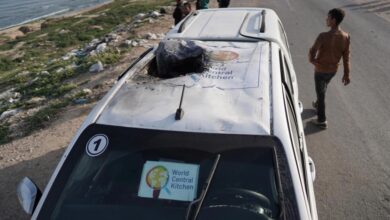
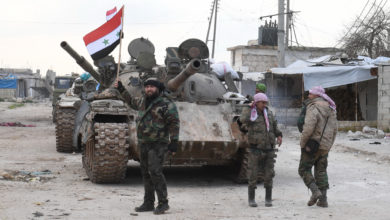
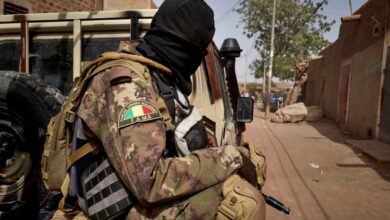

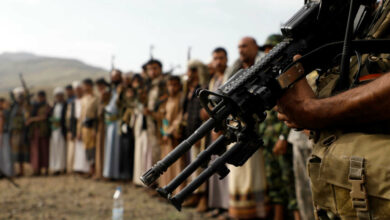
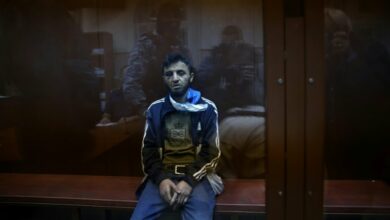
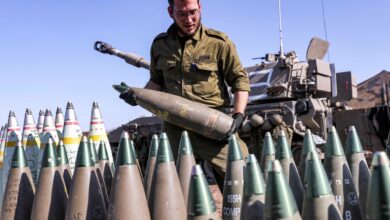
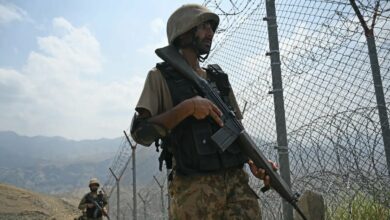

19 Comments